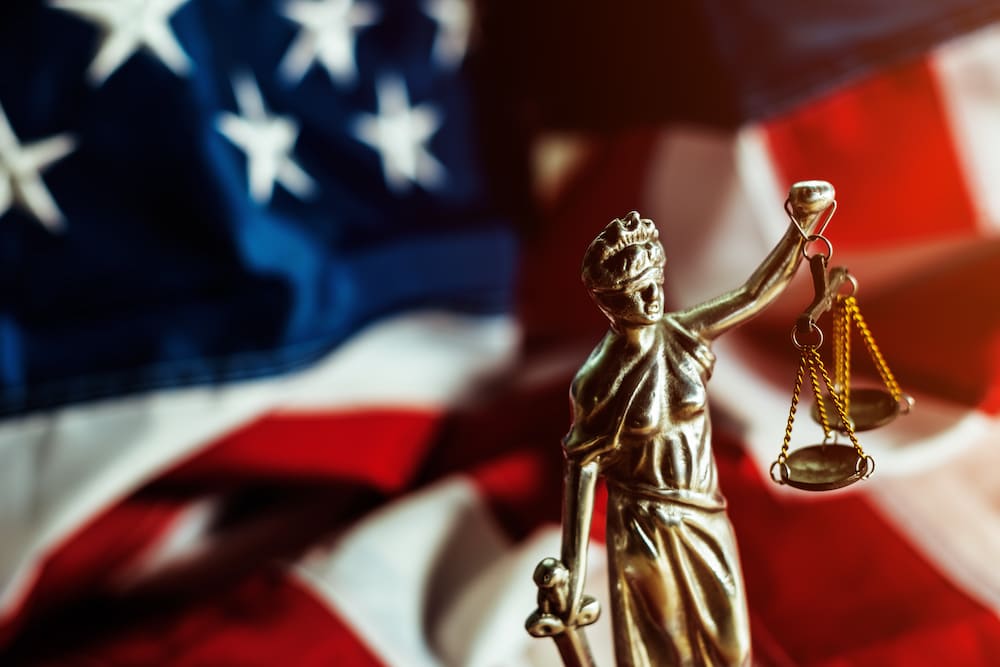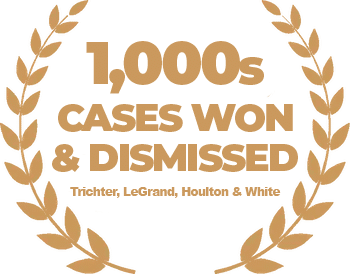STAR-SPANGLED BANNER: “IN GOD IS OUR TRUST”

Our National Anthem Misunderstood:
THE TRUE STAR-SPANGLED BATTLE STORY
AND WHY COMMON SENSE SAYS WE ALWAYS NEED TO SING THROUGH VERSE TWO
As Americans, We strive to live by a GOD based and Patriotic Code of Honor.
We acknowledge that “We” are those “of the People, by the People and for the People” that President Lincoln spoke about in his Gettysburg Address and that “We” ought to be leaders by our example.
All of us are proud of our country and especially of our troops!
That said, we are a very competitive society, and as such, We patriotically begin every sporting event by playing the “Star Spangled Banner”, but did you know that our National Anthem is composed of 4 verses?
That the first verse ends with a question and not a statement?
That common sense says we should sing it through at least the second verse?
And, did you know that God is referenced four times in verse 4?
In regard to these last thoughts, I have always been bothered that so many of us Americans don’t sing our National Anthem.
Have you also wondered why there are so many who just listen to some entertainer sing and not sing themselves?
Why wouldn’t they want to celebrate this great story of American courage and bravery by telling it in a song.
Regrettably, I believe the answer is three-fold. First, many of us do not know what really happened at Chesapeake Bay on September 12-14, 1814- the time that motivated the writing of the Star-Spangled Banner.
Second, I believe the professional entertainers are at fault, too, because they sing our national anthem for themselves and not so we can join them- they forgot it belongs to us. And third, I believe that many of us do not know our National Anthem’s words or that it has four verses – we generally just sing the first because that is what we know.
With the above in mind, let me retell you this very inspirational story about “The Star Spangled”.
It is my hope that my story will become your story to tell and proudly retell!
Knowing the story, you will easily learn its words and will be motivated to sing them the next time you hear the anthem.
And so:
The War of 1812, sometimes called “the Second War of Independence”, was the only one where the United States was invaded by a foreign power.
We declared war against Great Brittan because it regularly kidnapped American sailors and disrupted American trade by blockade.
This was because England was constantly at war with France, from 1799-1815, this period was called the Napoleonic Wars.
Under this backdrop, in 1814 we were losing the war; Chicago, Detroit and much of the states of Maine and New York were under British control while the Indians, supplied with British arms, were waging war on the Western frontiers.
Massachusetts was even sponsoring a plan to secede from the United States so it could pursue a separate peace with England.
Landing near the capital, the British not only marched on Washington, D. C., but sacked and burned it after defeating an American army twice its size.
President James Madison, “the Father of our Bill of Rights”, barely escaped with his wife, Dolly.
It was Dolly who refused to leave until she could rescue priceless historical treasures, e.g., a portrait of President Washington.
Notwithstanding that our Capitol had been taken, it was not a military target of any real consequence.
That honor fell to nearby Baltimore, Maryland, which was the third largest city.
This was a great seaport because of Chesapeake Bay; it was a large center of commerce of the young nation.
Take Baltimore and the United States might fall, so thought the British!
Accordingly, the British plan was to attack and capture Baltimore which had openly declared itself hostile to England.
It was also to punish the city, nicknamed a “nest of pirates”, because its schooners had retaliated against the British by seizing its ships and cargoes.
Indeed, the Baltimore fleet was responsible for 30% of all British ships captured. The plan was to do so by land and by sea.
Here, the invading navy, commanded by Admiral Alexander Cochrane, was composed of troop transports, supply ships, 16 warships that included bomb- ketches: ships that fired mortars.
These were superior weapons that allowed the dropping of 11″ and 13″ bombshells on targets two miles away with near perfect precision.
The bombs were launched with one pound bags of powder.
Interestingly, each bomb had a timing fuse that, depending on its length, if perfect length, would explode the instant it hit its target or, if too long, after hitting the target, or if too short, would burst in air.
The British rockets had a range of one and three quarters of a mile.
On the other hand, the Baltimore city fathers, anticipating a possible attack, in the summer of 1813 readied an existing military emplacement that guarded both the city and the port.
A large entrenchment was dug along the city outskirts, gunboat barges were built, the militia drilled, and improvements were made to brick star-shaped Fort McHenry: mounting a battery of 32-pound cannons with a range of a mile and a half at the bay edge, cannon at Patapsco River, making hot shot furnaces, and quartering a force of 1000 soldiers commanded by Major George Armistead
It was during this same period, Major Armistead commissioned Mary Pickersgill to make two flags for the fort; a garrison flag 30′ x 42′ and a flag for inclement weather, a storm flag, 17′ x 25′.
Each flag was to have 15 stars and 15 broad stripes.
The flag task was completed in seven weeks at a cost of $405.90 for the large flag and $168.54 for the smaller one, a sum that was more than most Baltimoreans made in a year.
On the morning of September 12, the British landed 5,000 plus troops at North Point and marched to attack the city.
Arriving at Hampstead Hill, they found their path blocked by 12,000 determined American Militia.
This was not an unexpected find for the invaders because it had been planned for their navy to subdue Fort McHenry, then to sail into the harbor and commence firing on Baltimore causing panic, and hopefully, a retreat of the American forces.
Accordingly, the invading army just waited on their navy to fulfill their plan.
Regrettably for General Ross, while awaiting the bombardment, an American sharpshooter shot him right off his white horse causing a great loss of morale.
With the first light of the 13th, about 6:30 a.m., the British fleet opened fire on Fort McHenry.
The battle commenced in a heavy rainstorm which caused the fort to fly its smaller bad weather flag.
Armistead’s cannon, being to light to reach the warships anchored two miles away, were useless and rendered the garrison totally defenseless absent the ships moving closer.
For the next 25 hours, it continuously rained rockets, shells and bombs on the fort – some 1,800 rockets were launched at Armistead and his 1,000 brave defenders – that is over one bomb, shell or rocket per minute.
Hour after hour, the American force took shelter and watched and waited.
Many took shelter at the outside back walls of the fort as 186 pound bombs and rockets fell into the walls.
At night, the rockets and exploding bombs lit up the sky and smoke obscured the fort in a dark cloud.
Rockets whisked through air and burst into flames on impact.
The sound was deafening and never stopped during the attack, and yet, the defensive force endured and endured.
This was all happening while under the waving storm flag – sometimes visible and sometimes not.
Weeks before, as the British were leaving Washington in flames, they seized Dr. William Beans as it was charged he was responsible for the arrests of British soldiers leaving the capital. He was imprisoned on a British warship.
This doctor was important enough that President Madison sent a 35 year old lawyer and poet, Frances Scott Key and Col. John S. Skinner to negotiate a prisoner of war release.
The two sailed out to the British fleet on September 3rd and were successful in obtaining Dr. Beans release -except, because of what they saw and heard about the British war plans, all three Americans were detained on board an enemy sloop – at least until after the city had fallen.
Hour after hour during the day the three Americans watched in frustration as they witnessed the power of the British fleet assaulting their homeland.
All night, they watched the mortars lob in bombs, their lit fuses leaving a trail of sparks.
They also saw rockets and explosions light up the sky – and on occasion, when the smoke was thinned by the wind, they saw the fort’s storm flag defiantly flying above the defenders.
The cannon, mortar and rocket fire noise made it impossible to sleep.
And then, at 7:30 a.m. on September 14, the bombardment stopped.
Key, Skinner, and Beanes knew of the British plan to attack Baltimore by land, too, and feared the worst -they had no way of knowing the truth.
They had no way of knowing that the British fleet had run out of ammunition, that Ross had been killed and that the British army advance had stalled.
And then during the misty and drizzly dawn, they saw it!
No, they did not see the storm flag; they saw the much larger garrison flag waiving defiantly as the British fleet readied to sail off.
Armistead had ordered it raised when he realized the battle had been won.
His troops celebrated the victory by firing guns and playing Yankee Doodle Dandy.
Proudly waving, the large stars and bars were visible from eight miles away – visible to the three Americans Key, Skinner and Beanes, who were overcome with joy.
Of course, seeing the star spangled banner and knowing the British had lost, Key was irresistibly inspired to write down what felt and he did so on an envelope.
Armistead lost only 4 defenders and had 24 wounded.
The British only had one ship hit and only one sailor was wounded.
Key wrote a four stanza poem that told the story of the battle which told of the pride of a brave, free and God loving people that call this country home.
In it he told a story of the pride of a country whose motto is “In God is our trust” and of a people who would not only unite to fight for freedom, but also, to keep it.
Key called the poem “The Defense of Fort McHenry”.
Put to the British melody of “Anacreon in Heaven”, the poem became our National anthem in 1931.
Many of us know the words of the first stanza because it is the one we regularly hear but the other three complete the battle as witnessed by Key.
The garrison flag is now on display at the Smithsonian Institution’s National Museum of American History.
Sadly, the fate of the storm flag is not known.
In closing, please read the National Anthem’s 4 verses that follow this article and you will then know all the story Francis Scott Key wanted us to celebrate.
Moreover, you will learn that they way we presently sing only the National Anthem’s verse 1 defies common sense because it ends in a question: “Is our flag still there?”.
Truth, patriotism, and common sense dictate that we need to stop embarrassing ourselves and sing the Star-Spangled Banner as it was written- at least through verse 2 where Key makes the statement that the flag is still there and Fort McHenry is still ours.
Let’s sing it and let’s sing it right!
We can do it! Finally, as People who love our country’s way of life, we have an obligation to our history to get it right.
We must never forget that We are truly blessed to live in the land of the free.
However, We must always remember that freedom is never free and that our freedom is a gift of our brave!
With the above in mind, I suggest that We voice our common desire to have our entertainers sing in a range we can participate and honor our veterans, past and present, by having them stand and be recognized during the our singing of our national anthem.
God Bless America and our troops!
Star-Spangled Banner- Lyrics Explained
Oh, say can you see by the dawn’s early light
What so proudly we hailed at the twilight’s last gleaming?
Whose broad stripes and bright stars thru the perilous fight,
O’er the ramparts we watched were so gallantly streaming?
And the rocket’s red glare, the bombs bursting in air,
Gave proof through the night that our flag was still there.
Oh, say does that star-spangled banner yet wave
O’er the land of the free and the home of the brave?
EXPLANATION: The first of the four stanzas of the National Anthem is composed of three questions.
In the first question, Key observes that it is early morning after the battle and asks if the flag is visible.
With great pride, Key then reports that during last night’s battle he saw the flag from behind the walls (ramparts) of Fort McHenry, illuminated by the burning rocket trails and explosions and bomb blasts, and, that it continued to wave in the wind.
To Key, the very fact that the British Fleet kept up its attack and that he could see the flag still flying meant that the American soldiers at the fort had not surrendered or been defeated.
The second question is self explanatory; Key (8 miles away on a truce ship), cannot see the flag and ponders if the fort has fallen.
The next stanza provides the reasons why Key was questioning whether or not Fort McHenry had succumbed to the British bombardment.
On the shore, dimly seen through the mists of the deep,
Where the foe’s haughty host in dread silence reposes,
What is that which the breeze, o’er the towering steep,
As it fitfully blows, half conceals, half discloses?
Now it catches the gleam of the morning’s first beam,
In full glory reflected now shines in the stream:
‘Tis the star-spangled banner! Oh long may it wave
O’er the land of the free and the home of the brave!
EXPLANATION: History records that the weather was drizzly and misty the morning after the battle. Indeed, the weather was worse during the battle as it was storming with heavy winds and rain.
Considering the adverse weather and understanding that the cannons, rockets (1800 were fired), mortars and bombs were all black powder based, and that they make a lot of thick black smoke, it was a wonder Key was able to see much at all.
As an observer, he was lucky that the rain and high winds thinned the heavy smoke from time to time so he could see the fort when explosion blasts illuminated in the darkness.
Remember, too, that the bombardment was continuous and lasted 25 hours – there were constant explosions.
When it ceased at 7:30 a.m., there was a deafening silence. Accordingly, Key first tells us in Stanza Two that the bombardment ended, all fell silent, and, that his vision of Fort McHenry was obscured causing him to fear the worst.
Key then says the wind thinned the obscurity, that the Sun began to rise and the fort’s flag was there – proudly flying-proudly displaying the courage of the fort’s defenders.
And where is that band who so vauntingly swore
That the havoc of war and the battle’s confusion,
A home and a country should leave us no more!
Their blood has washed out their foul footsteps’ pollution.
No refuge could save the hireling and slave
From the terror of flight, or the gloom of the grave:
And the star-spangled banner in triumph doth wave
O’er the land of the free and the home of the brave!
EXPLANATION: This Stanza begins with Key asking “where are the British now?”
Gloating that the enemy is gone, he recites that the British were bloodied and vanquished. Key then announces that the American flag is now flying in celebration of the British defeat signifying that our country is free because of the brave.
Oh! thus be it ever, when freemen shall stand
Between their loved home and the war’s desolation!
Blest with victory and peace, may the heav’n rescued land
Praise the Power that hath made and preserved us a nation.
Then conquer we must, when our cause it is just,
And this be our motto: “In God is our trust.”
And the star-spangled banner in triumph shall wave
O’er the land of the free and the home of the brave!
EXPLANATION: Key heralds our military for our freedom. Referencing GOD 4 times, he thanks HIM for defeating the British and protecting our nation.
Lastly, Key says that by trusting in GOD that our country’s freedoms will persevere because of our soldiers’ bravery.
HISTORICAL NOTE: In 1931, Congress made the Star Spangled Banner our National Anthem.
TELL US ABOUT YOUR CASE
Form Submissions have a fast response time. Request your free consultation to discuss your case with one of our attorneys over the phone. The use of this form does not establish an attorney-client relationship.
The information on this website is for general information purposes only. Nothing on this site should be taken as legal advice for any individual case or situation. This information is not intended to create, and receipt or viewing does not constitute, an attorney-client relationship.


